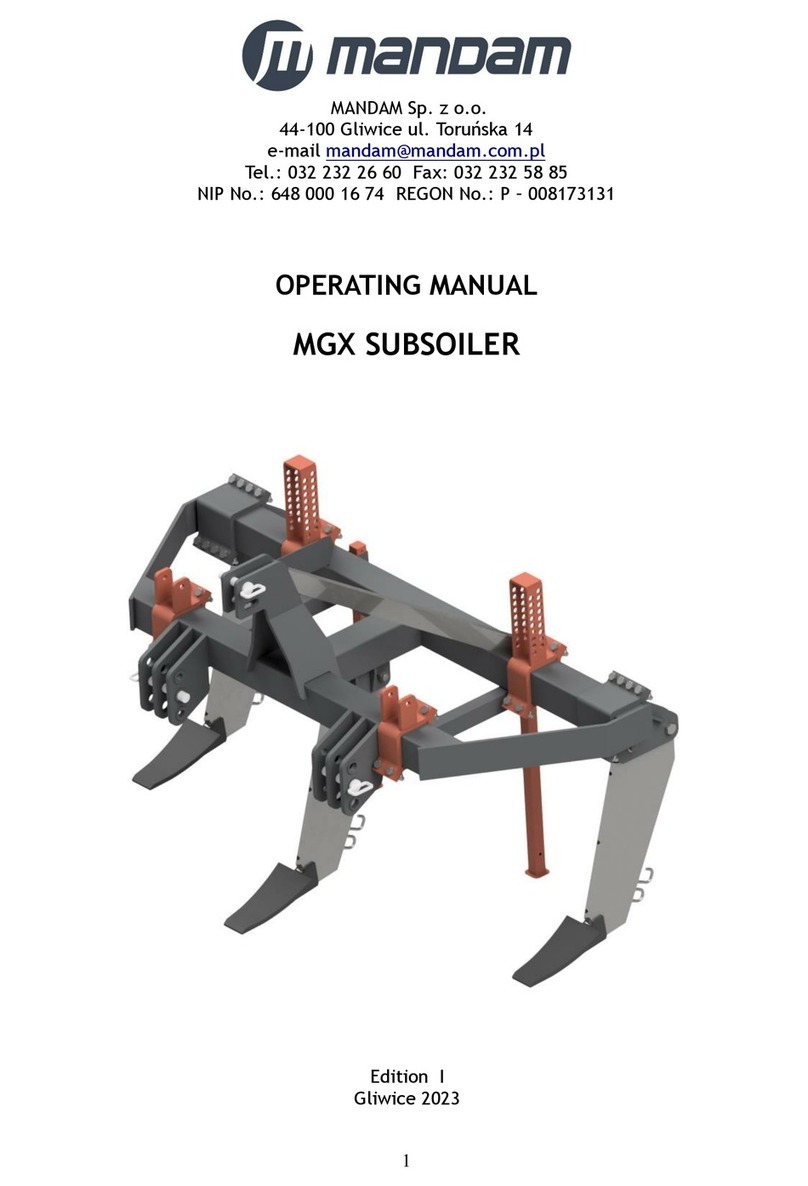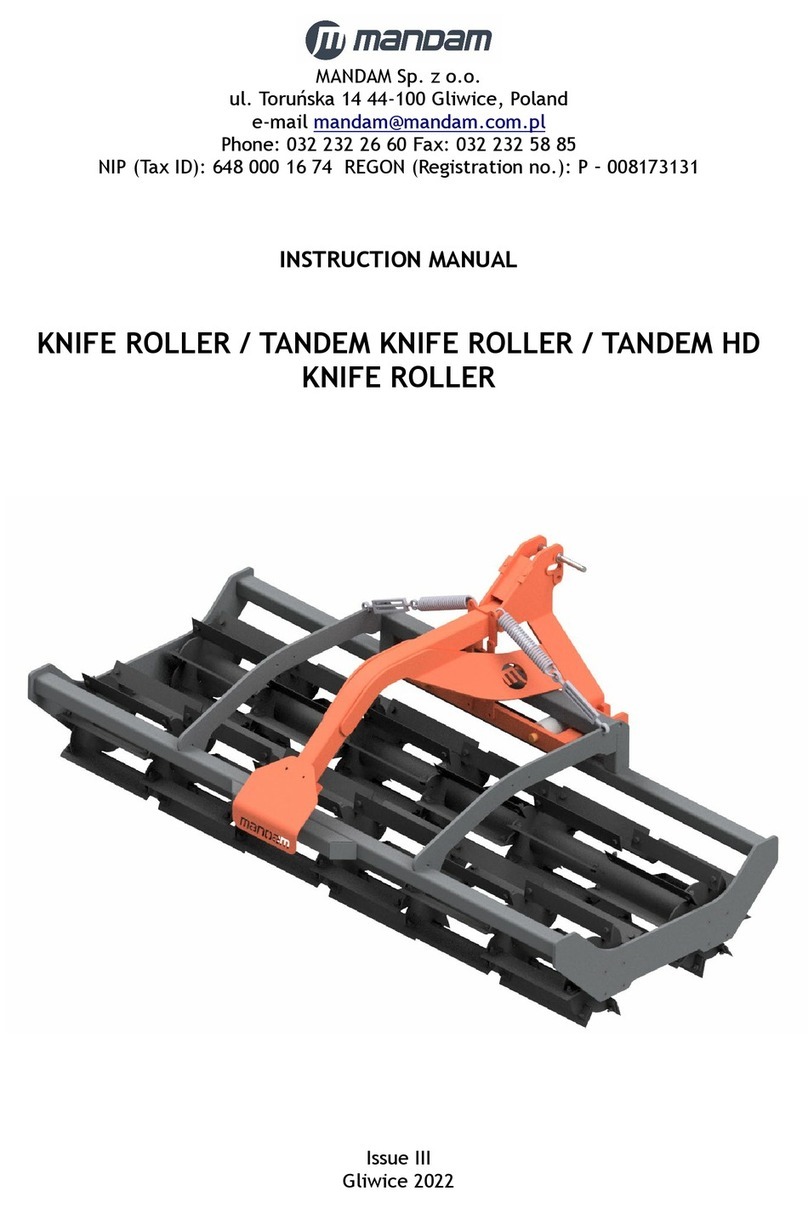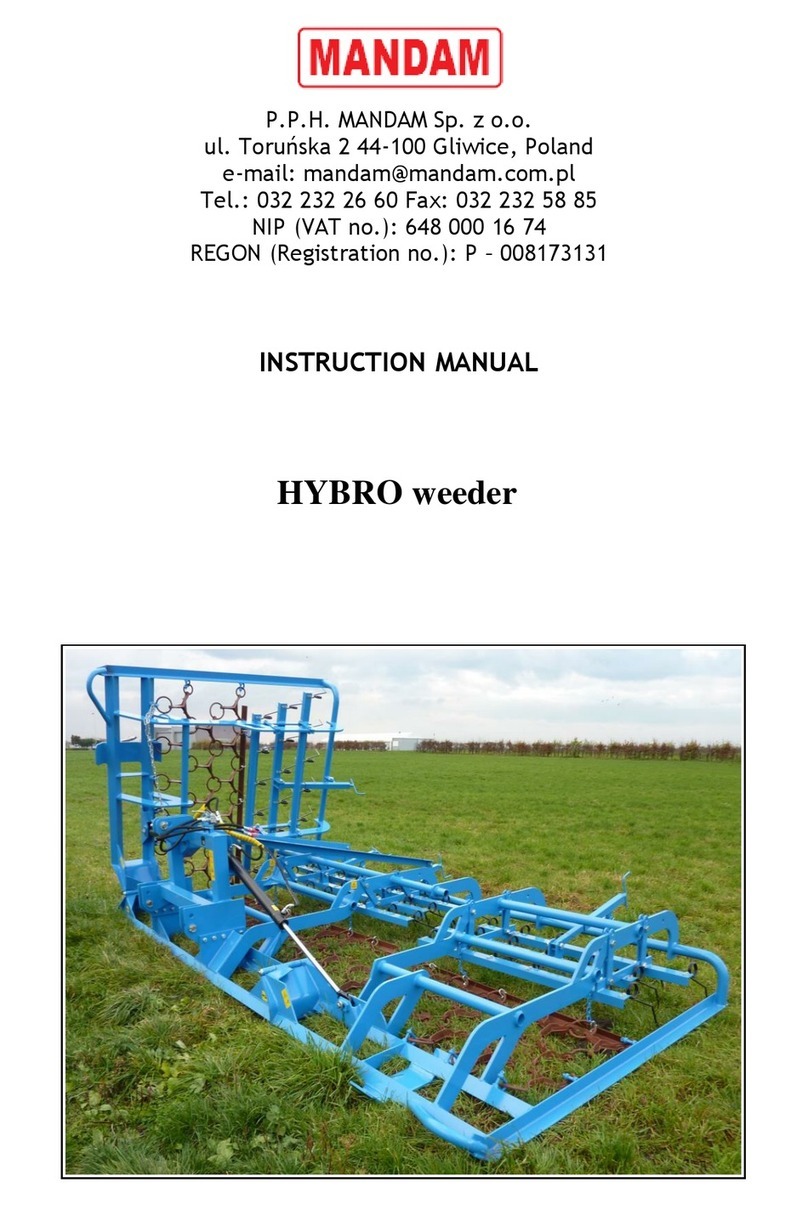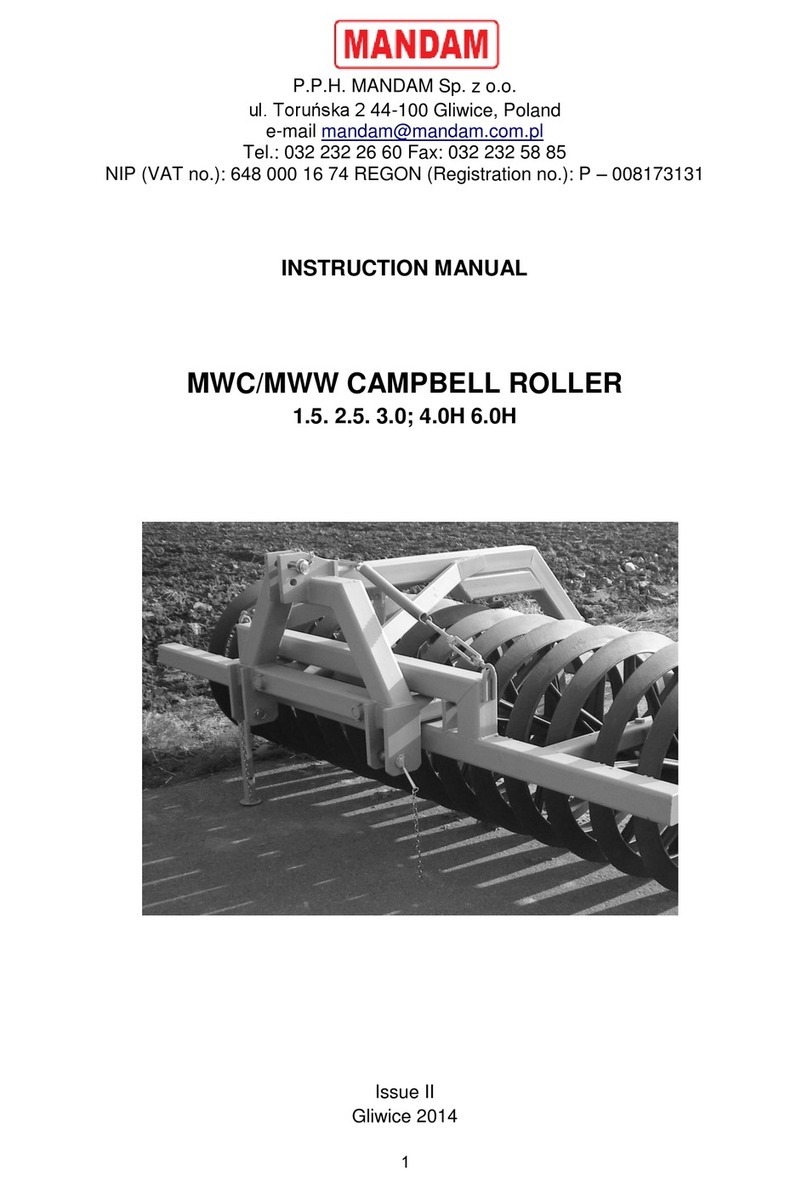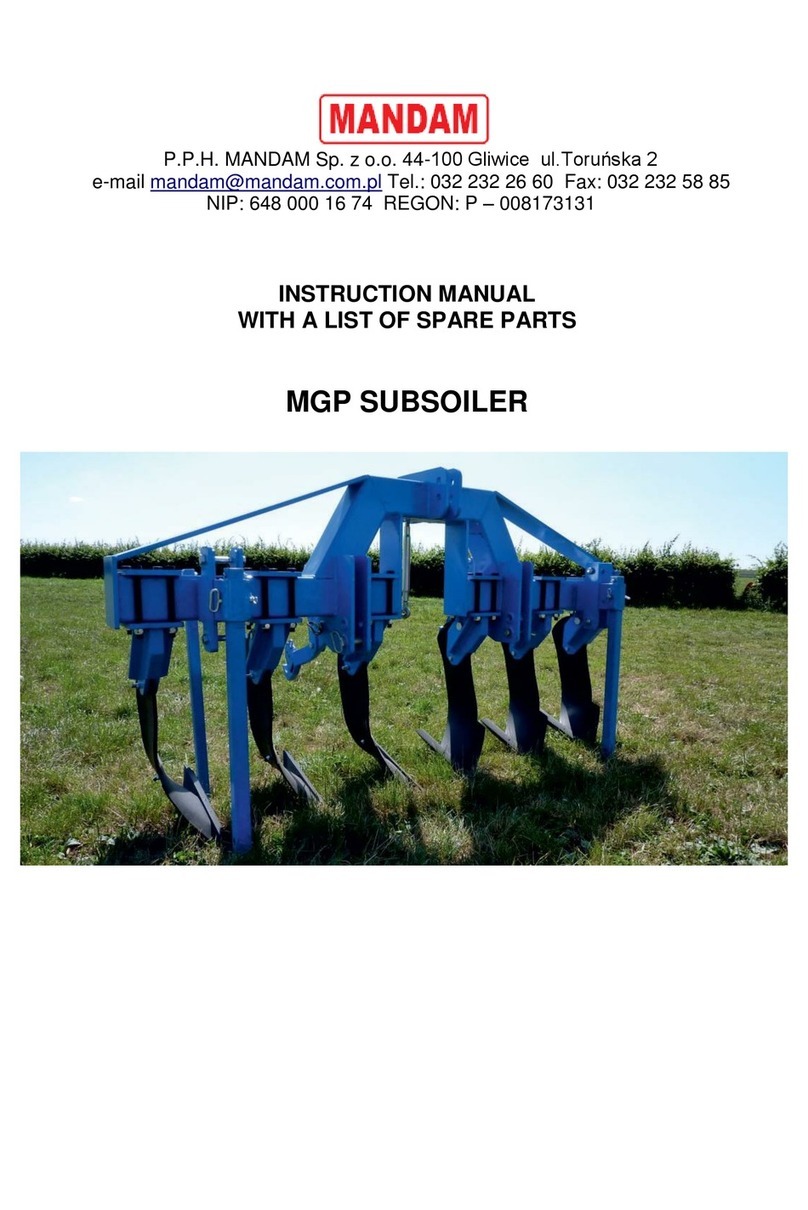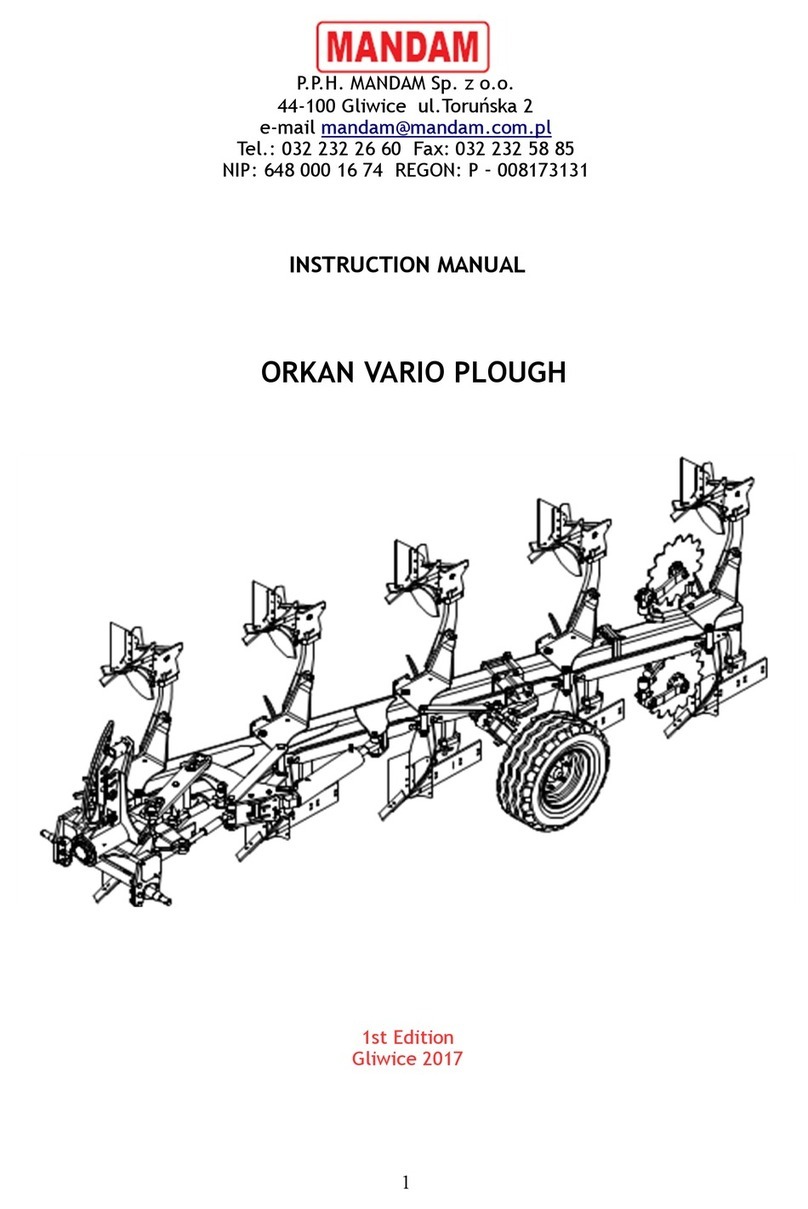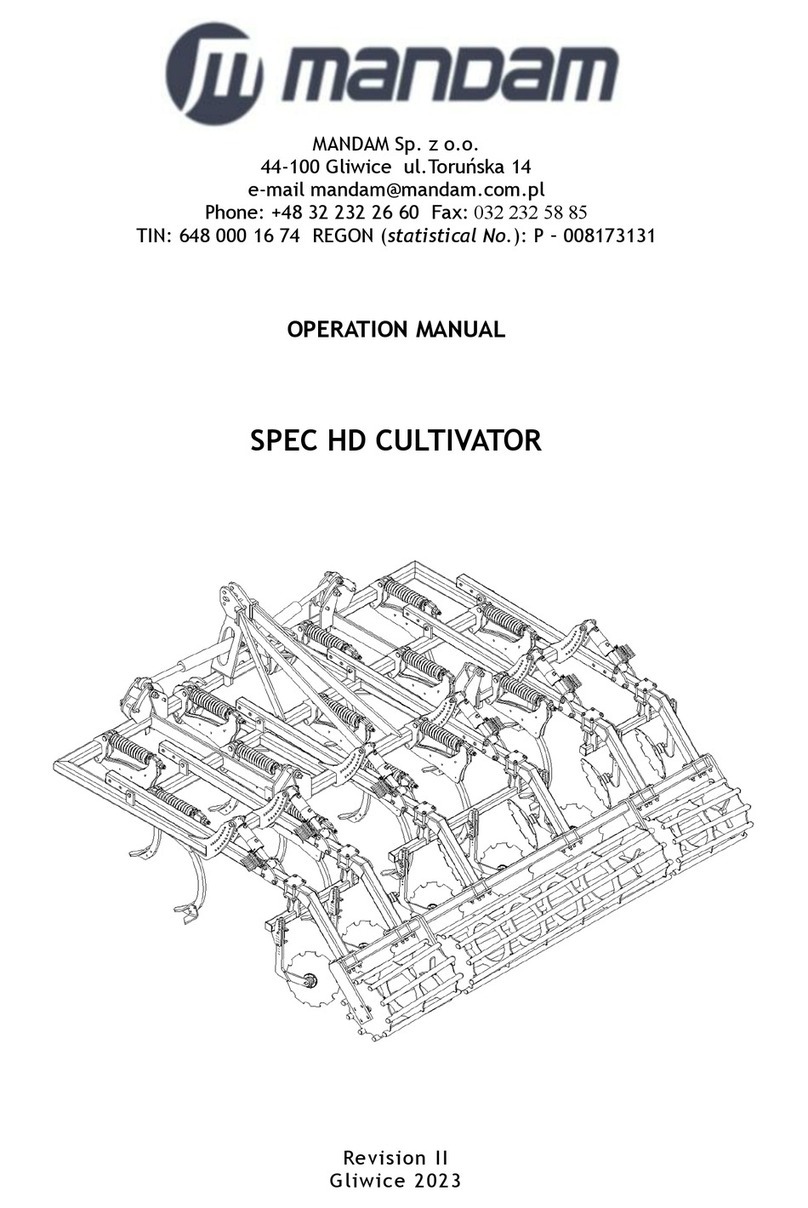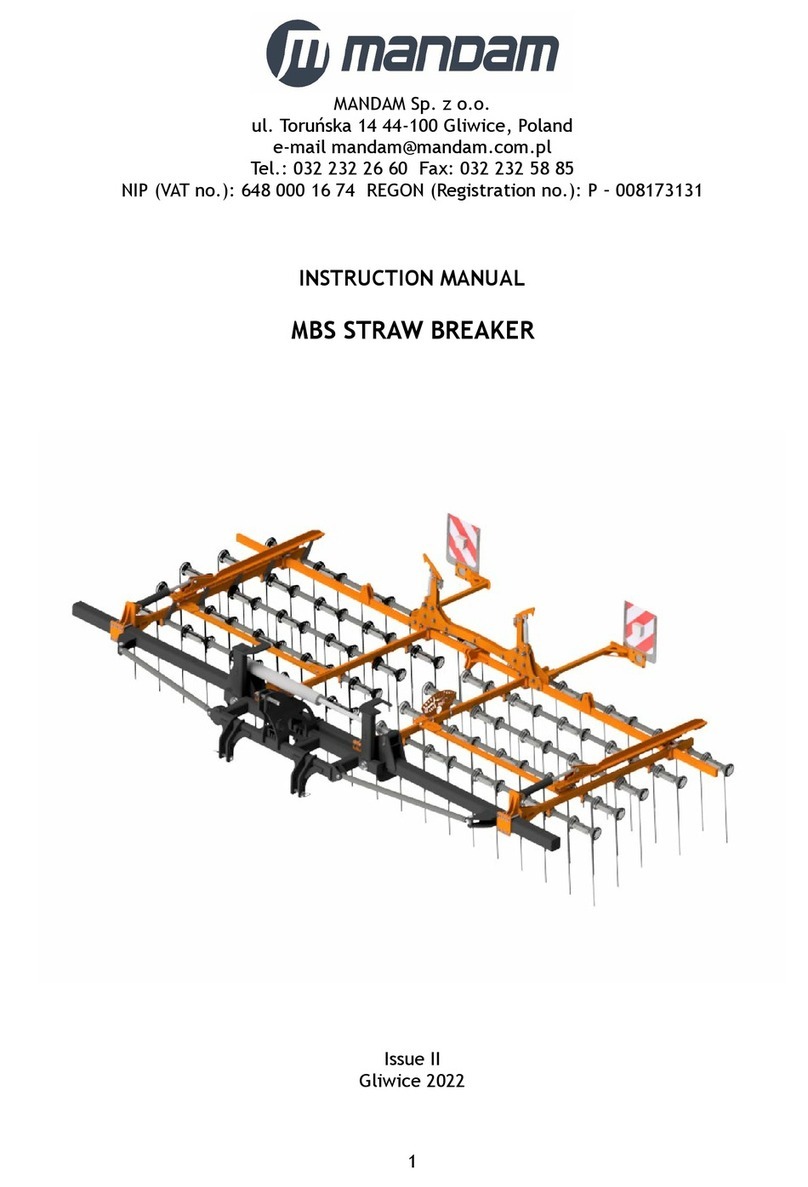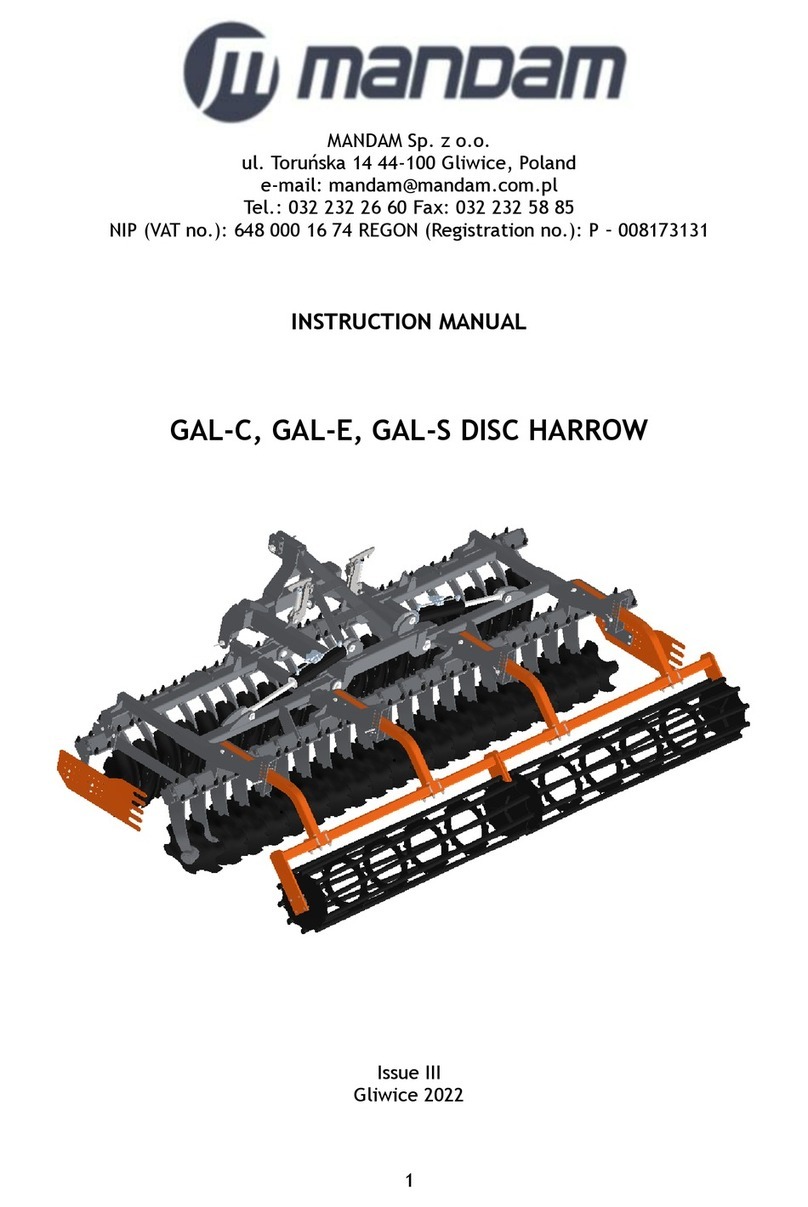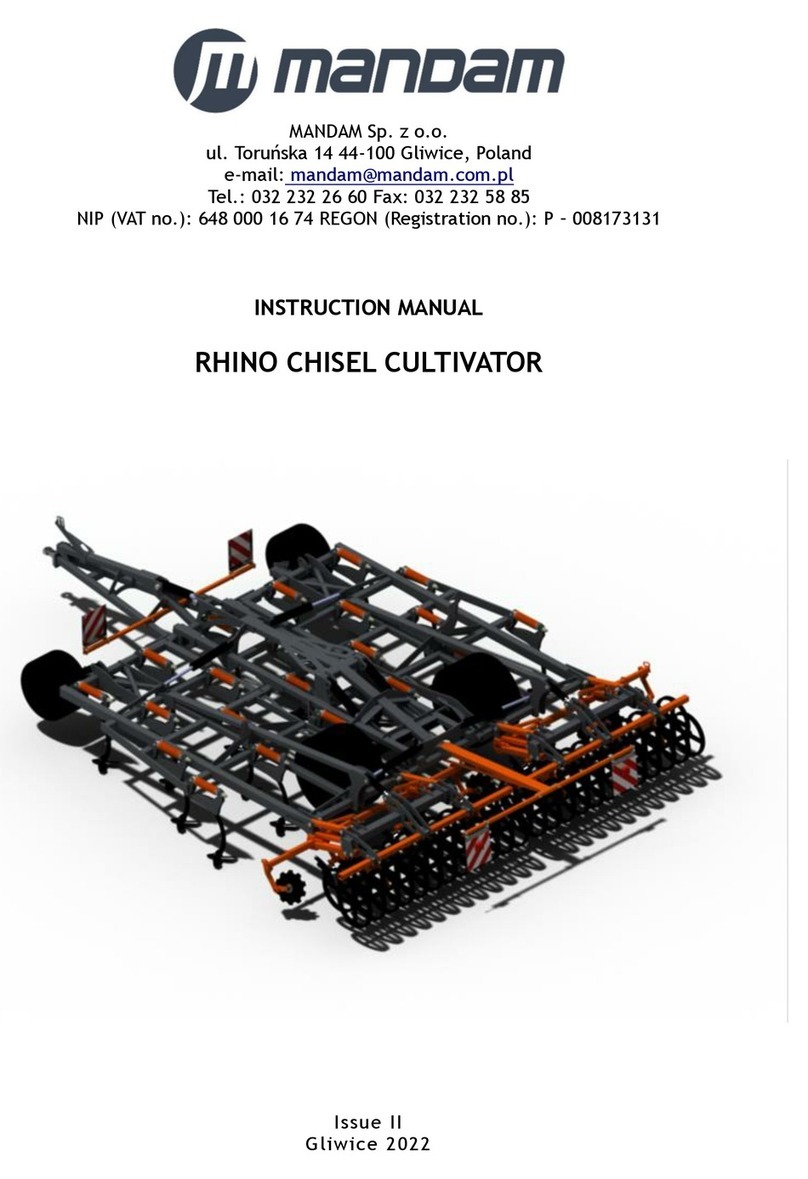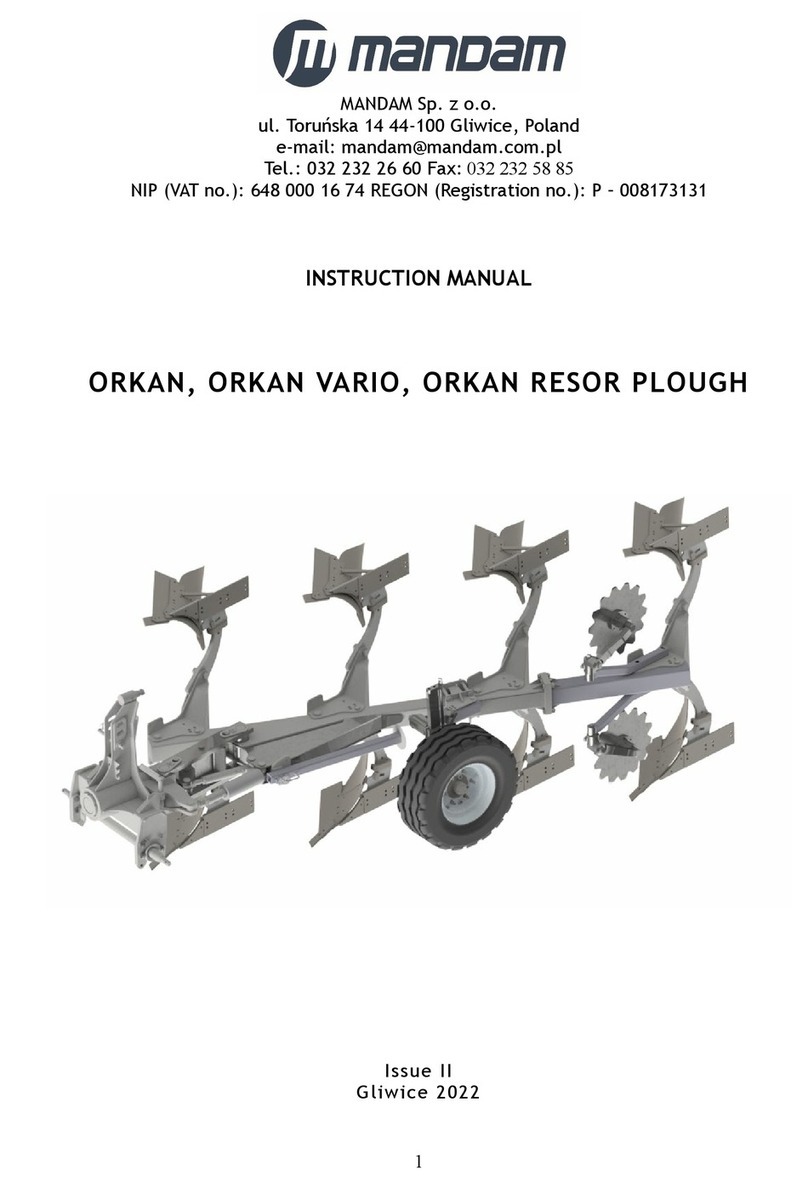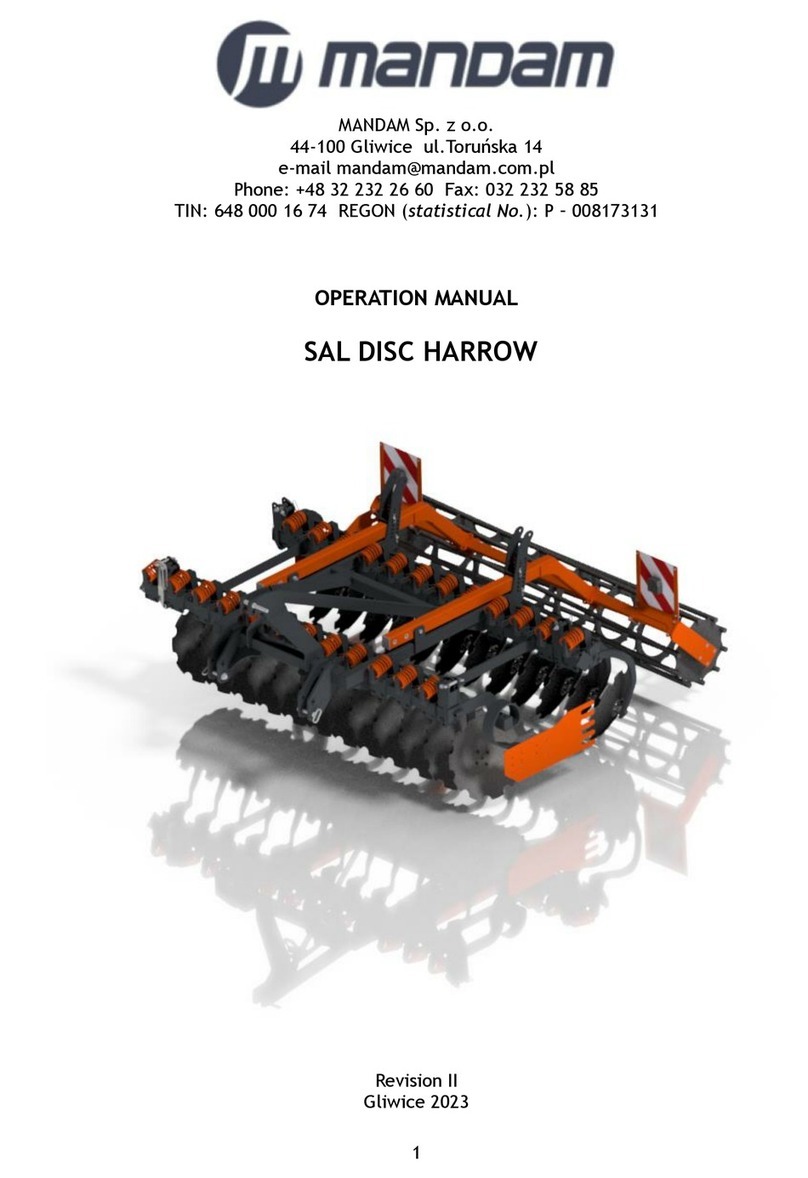3
1. Introduction................................................................................................................................4
1.1. Safety symbols and inscriptions ...........................................................................................5
2. General information....................................................................................................................7
2.1. Design of the SUPER cultivator.........................................................................................7
2.2. Intended use .........................................................................................................................8
3. General safety information .......................................................................................................8
3.1. Proper hitching and unhitching the cultivator from the tractor ........................................9
3.2. Hydraulic system ..................................................................................................................9
3.3. Transport safety on public roads..........................................................................................9
3.4. Residual risk description ....................................................................................................10
3.5. Residual risk assessment ....................................................................................................10
4. Information on operation and use ..........................................................................................10
4.1. Before using the cultivator.................................................................................................12
4.2. Hitching the cultivator with the tractor .............................................................................13
4.3. Operation and adjustment..................................................................................................13
4.3.1. Automatic locking of the machine side extensions ......................................................14
4.3.2. Implement opening sequence ........................................................................................14
4.3.3. SUPER cultivator working depth.................................................................................16
4.4. Rules for transporting the cultivator on public roads and lighting the implement .........19
4.5. Maintenance and lubrication.............................................................................................20
4.6. Screw tightening torque .....................................................................................................20
5. SUPER cultivator maintenance ..............................................................................................21
5.1. Hydraulic system maintenance ..........................................................................................22
6. Replacement procedures .........................................................................................................22
7. SUPER cultivator storage........................................................................................................23
8. SUPER cultivator – spare parts..............................................................................................24
